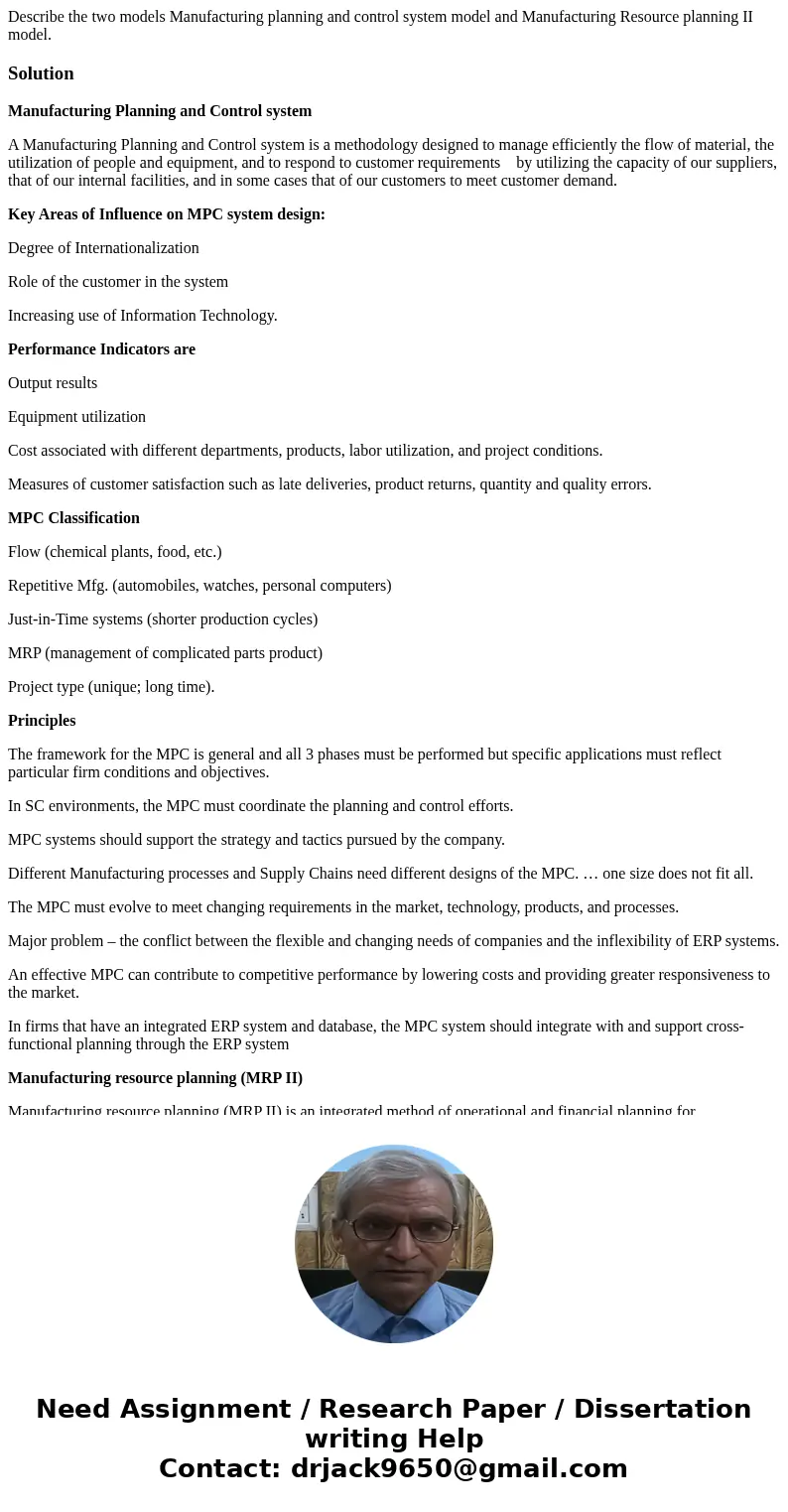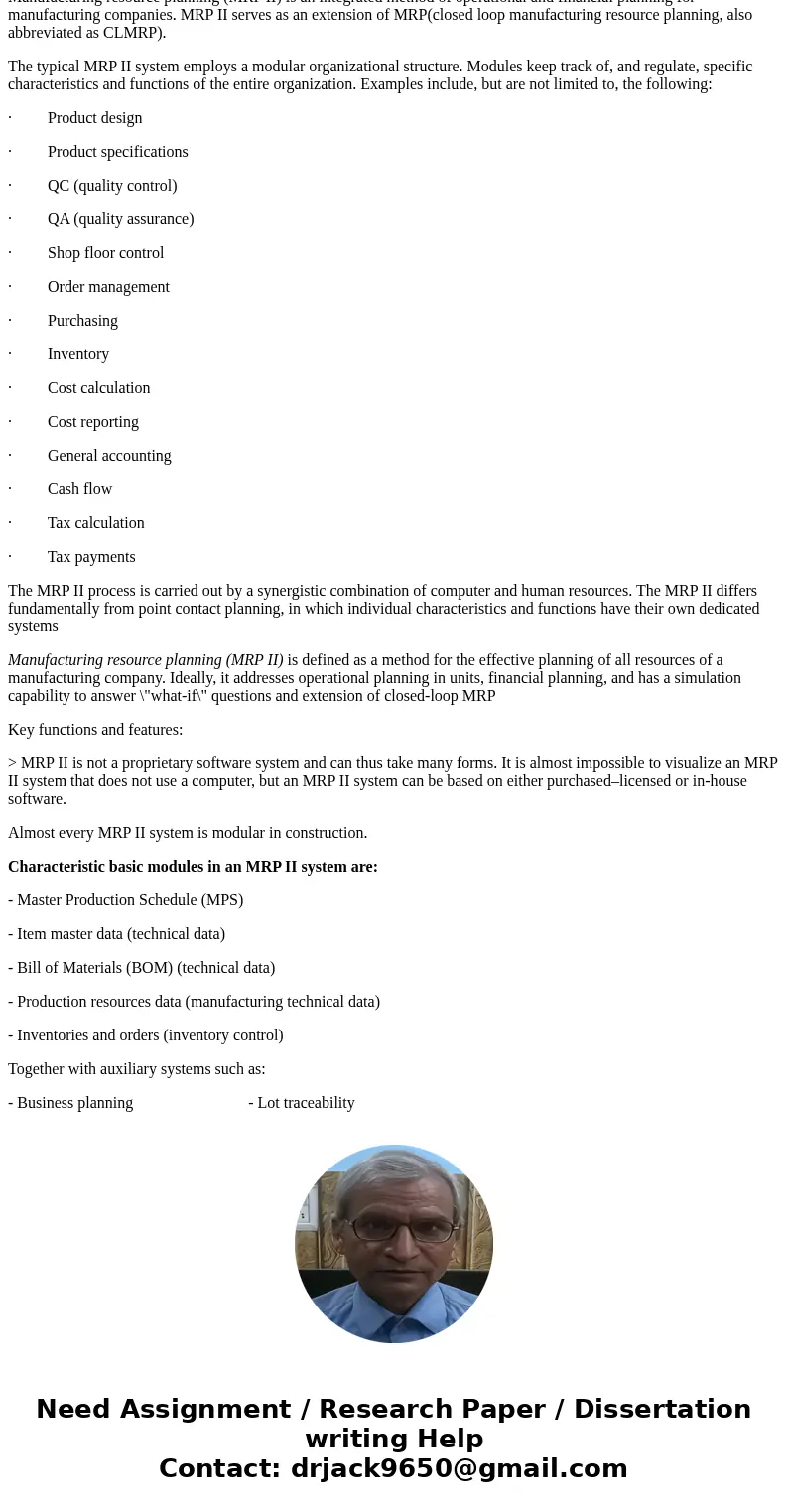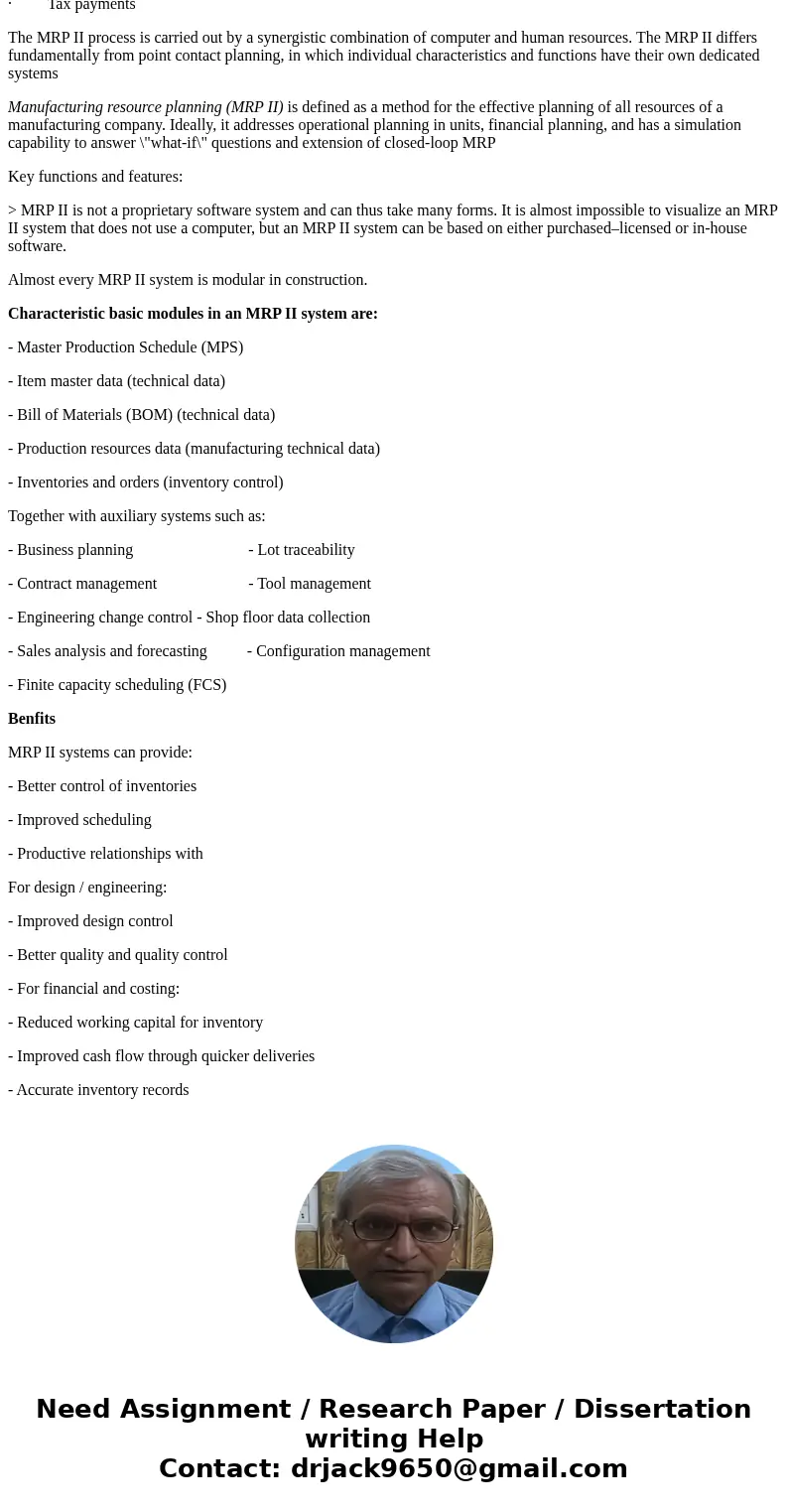Describe the two models Manufacturing planning and control s
Describe the two models Manufacturing planning and control system model and Manufacturing Resource planning II model.
Solution
Manufacturing Planning and Control system
A Manufacturing Planning and Control system is a methodology designed to manage efficiently the flow of material, the utilization of people and equipment, and to respond to customer requirements by utilizing the capacity of our suppliers, that of our internal facilities, and in some cases that of our customers to meet customer demand.
Key Areas of Influence on MPC system design:
Degree of Internationalization
Role of the customer in the system
Increasing use of Information Technology.
Performance Indicators are
Output results
Equipment utilization
Cost associated with different departments, products, labor utilization, and project conditions.
Measures of customer satisfaction such as late deliveries, product returns, quantity and quality errors.
MPC Classification
Flow (chemical plants, food, etc.)
Repetitive Mfg. (automobiles, watches, personal computers)
Just-in-Time systems (shorter production cycles)
MRP (management of complicated parts product)
Project type (unique; long time).
Principles
The framework for the MPC is general and all 3 phases must be performed but specific applications must reflect particular firm conditions and objectives.
In SC environments, the MPC must coordinate the planning and control efforts.
MPC systems should support the strategy and tactics pursued by the company.
Different Manufacturing processes and Supply Chains need different designs of the MPC. … one size does not fit all.
The MPC must evolve to meet changing requirements in the market, technology, products, and processes.
Major problem – the conflict between the flexible and changing needs of companies and the inflexibility of ERP systems.
An effective MPC can contribute to competitive performance by lowering costs and providing greater responsiveness to the market.
In firms that have an integrated ERP system and database, the MPC system should integrate with and support cross-functional planning through the ERP system
Manufacturing resource planning (MRP II)
Manufacturing resource planning (MRP II) is an integrated method of operational and financial planning for manufacturing companies. MRP II serves as an extension of MRP(closed loop manufacturing resource planning, also abbreviated as CLMRP).
The typical MRP II system employs a modular organizational structure. Modules keep track of, and regulate, specific characteristics and functions of the entire organization. Examples include, but are not limited to, the following:
· Product design
· Product specifications
· QC (quality control)
· QA (quality assurance)
· Shop floor control
· Order management
· Purchasing
· Inventory
· Cost calculation
· Cost reporting
· General accounting
· Cash flow
· Tax calculation
· Tax payments
The MRP II process is carried out by a synergistic combination of computer and human resources. The MRP II differs fundamentally from point contact planning, in which individual characteristics and functions have their own dedicated systems
Manufacturing resource planning (MRP II) is defined as a method for the effective planning of all resources of a manufacturing company. Ideally, it addresses operational planning in units, financial planning, and has a simulation capability to answer \"what-if\" questions and extension of closed-loop MRP
Key functions and features:
> MRP II is not a proprietary software system and can thus take many forms. It is almost impossible to visualize an MRP II system that does not use a computer, but an MRP II system can be based on either purchased–licensed or in-house software.
Almost every MRP II system is modular in construction.
Characteristic basic modules in an MRP II system are:
- Master Production Schedule (MPS)
- Item master data (technical data)
- Bill of Materials (BOM) (technical data)
- Production resources data (manufacturing technical data)
- Inventories and orders (inventory control)
Together with auxiliary systems such as:
- Business planning - Lot traceability
- Contract management - Tool management
- Engineering change control - Shop floor data collection
- Sales analysis and forecasting - Configuration management
- Finite capacity scheduling (FCS)
Benfits
MRP II systems can provide:
- Better control of inventories
- Improved scheduling
- Productive relationships with
For design / engineering:
- Improved design control
- Better quality and quality control
- For financial and costing:
- Reduced working capital for inventory
- Improved cash flow through quicker deliveries
- Accurate inventory records



 Homework Sourse
Homework Sourse